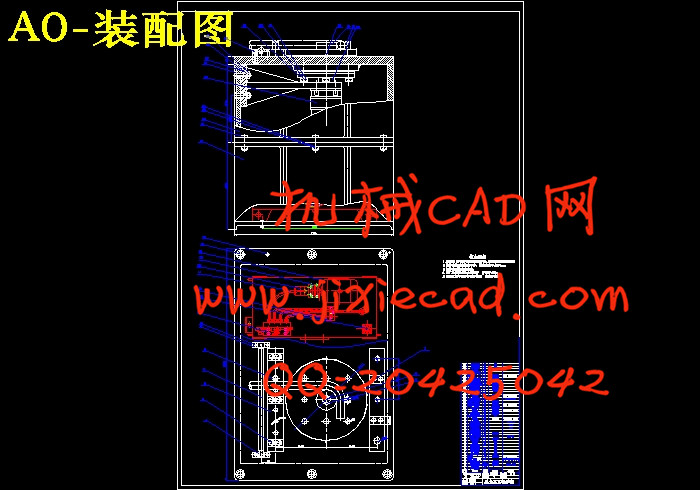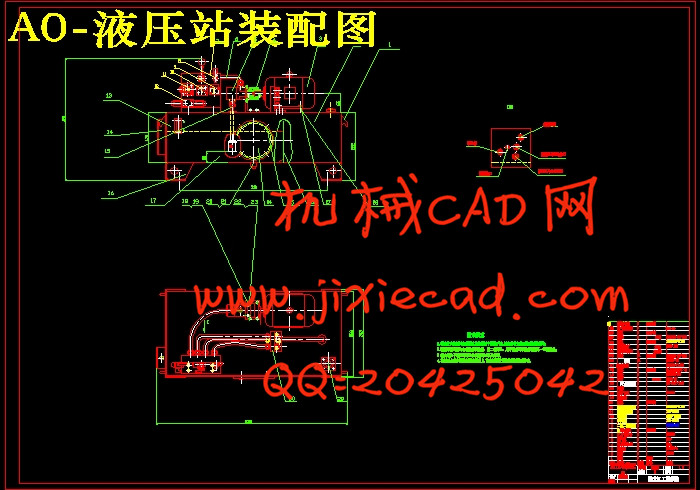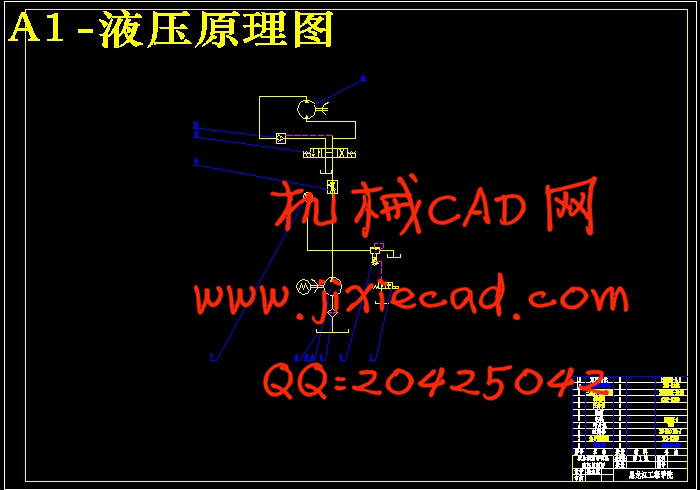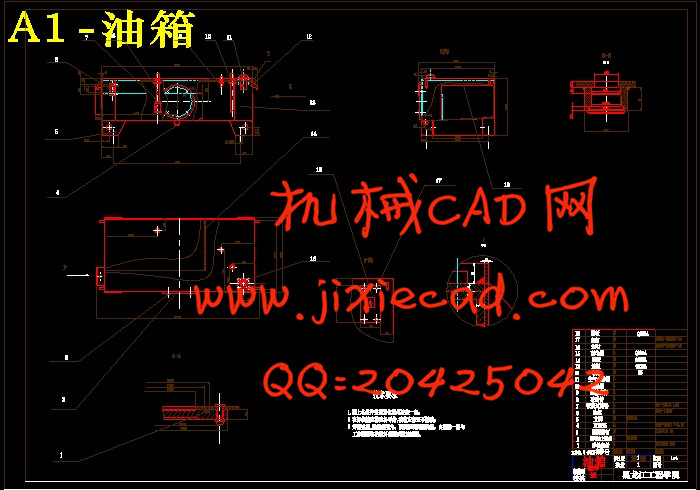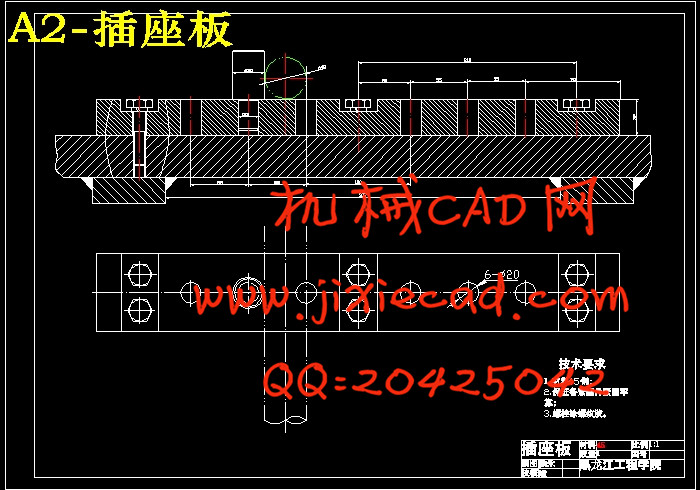设计简介
摘 要
液压钢筋弯曲机具有节约能源,加工效率高,易于控制,加工性能好等特点,它符合现代社会发展的需求,在建筑行业具有很好的发展前途。本文较为详细的介绍了液压钢筋弯曲机的设计过程和产品结构的一些说明。
首先,根据设计任务书提出的要求作出各种方案,通过分析论证各方案的优劣,选出其中较好的方案,进行设计。本设计部分分两大块:第一:弯曲设计,弯曲设计包括计算工作盘转速,工作时扭矩及功率的大小,设计主轴,初步确定其最小轴径尺寸,再根据要求设计出工作盘,及附件的结构尺寸。第二:液压马达、液压泵的选择及其应用。
其次,各部分结构设计完成后,其质量到底如何,其强度刚度能否达到要求,能否满足生产需要,这些要靠校核来检测,齿轮的校核,传动轴的校核,键的校核。对这些部分的校核都通过对其强度和刚度进行验算,用其结果与其许用的强度、刚度进行比较,从而确定各危险部位是否满足要求。
关键词: 弯曲成型机;液压马达;液压泵;精度;工作盘
ABSTRACT
The Hydraulic reinforced bar bending machine cuts off a set of silk to have the economy energy, processing the efficiency high, be easy to be controlled, processing the good function etc. characteristics, it fits the need of the modern and social development, having the good development prospect at the profession of construction. This text will introduce to you the design process and the structure of this machine more detailedly.
The first, Make a various project according to the request of the design mission book, pass analytical good and bad of the argument everyone's case, select to among them compare good of project, carry on the design. This design part divides in to six courses :The first: the design of bending machine, curve the design to include to compute the work dish to turn soon, in the work`s hour twists force and the size of the powers, the design principal axis, the first step makes sure its the minimum stalk the path size, then design a work dish according to the request, and the structure size of the enclosure. The second: a hydraulic motor, hydraulic pump selection.
After each parts of structure design completed, it`s quantity exactly how, its strength just the degree can attain the request, can satisfy to produce the demand, these pits that want to depend on calculating, the gear`s checking, the check of the driver shaft, the check of the key. All these passing to the pits of these parts as to it's strength and just the degree carries on checking to calculate, the strength that allowed , using these results, comparised with each others, thus making sure whether each dangerous part satisfies the request or not.
Key words: Bending machine ;Hydraulic motor; Hydraulic pump,Accuracy;
Working disc
目 录
摘要……………………………………………………………………………………Ⅰ
Abstract …………………………………………………………………………………Ⅱ
第1章 绪论………………………………………………………………………………1
1.1 设计目的和意义…………………………………………………………………1
1.2研究现状…………………………………………………………………………1
1.3设计内容及前景展望………………………………………………………………2
第2章 系统性能及工作原理…………………………………………………………3
2.1系统性能…………………………………………………………………3
2.2系统工作原理………………………………………………………………3
2.3本章小结…………………………………………………………………4
第3章 工作盘的设计…………………………………………………………………5
3.1工作盘转速………………………………………………………………5
3.2作用在工作盘上的扭矩M………………………………………………………5
3.3传动轴处的键的设计与校核………………………………………………………6
3.3.1 危险部位轴的直径…………………………………………………………6
3.3.2键的设计与校核……………………………………………………………6
3.4工作盘及附件的选择和使用………………………………………………………6
3.4.1工作盘的设计原理…………………………………………………………6
3.4.2心轴的使用…………………………………………………………………7
3.4.3成型轴的使用………………………………………………………………7
3.4.4挡铁轴的使用………………………………………………………………7
3.4.5送料辊的使用………………………………………………………………7
3.4.6钢筋挡板的使用……………………………………………………………7
3.4.7心轴与成型轴R的确定……………………………………………………8
3.4.8工作盘上的心轴的校核……………………………………………………8
3.5本章小结……………………………………………………………………………9
第4章 液压系统的设计…………………………………………………………10
4.1液压系统的设计步骤与设计要求………………………………………………10
4.1.1设计步骤……………………………………………………………………10
4.1.2明确设计要求……………………………………………………………10
4.2制定基本方案和绘制液压系统图………………………………………………10
4.2.1制定调速方案……………………………………………………………10
4.2.2制定压力控制方案………………………………………………………11
4.2.3制定顺序动作方案………………………………………………………12
4.2.4选择液压动力源……………………………………………………………12
4.2.5液压系统的工作原理………………………………………………………12
4.2.6绘制液压系统图…………………………………………………………13
4.3液压元件的选择与专用件设计…………………………………………………13
4.3.1液压马达的选择…………………………………………………………13
4.3.2液压泵的选择…………………………………………………………14
4.3.3液压阀的选择…………………………………………………………15
4.3.4油管尺寸的确定…………………………………………………………16
4.3.5油箱的设计………………………………………………………………16
4.3.6液压油液的选择…………………………………………………………17
4.4液压系统设计及维护………………………………………………………18
4.4.1总体设计……………………………………………………………………18
4.4.2油管的布置要求……………………………………………………………18
4.4.3液压泵和驱动电机的连接与安装问题……………………………………18
4.4.4液压设备的维护……………………………………………………………19
4.5本章小结…………………………………………………………………………19
结论………………………………………………………………………………………20
参考文献 ………………………………………………………………………………22
致谢………………………………………………………………………………………24
液压钢筋弯曲机具有节约能源,加工效率高,易于控制,加工性能好等特点,它符合现代社会发展的需求,在建筑行业具有很好的发展前途。本文较为详细的介绍了液压钢筋弯曲机的设计过程和产品结构的一些说明。
首先,根据设计任务书提出的要求作出各种方案,通过分析论证各方案的优劣,选出其中较好的方案,进行设计。本设计部分分两大块:第一:弯曲设计,弯曲设计包括计算工作盘转速,工作时扭矩及功率的大小,设计主轴,初步确定其最小轴径尺寸,再根据要求设计出工作盘,及附件的结构尺寸。第二:液压马达、液压泵的选择及其应用。
其次,各部分结构设计完成后,其质量到底如何,其强度刚度能否达到要求,能否满足生产需要,这些要靠校核来检测,齿轮的校核,传动轴的校核,键的校核。对这些部分的校核都通过对其强度和刚度进行验算,用其结果与其许用的强度、刚度进行比较,从而确定各危险部位是否满足要求。
关键词: 弯曲成型机;液压马达;液压泵;精度;工作盘
ABSTRACT
The Hydraulic reinforced bar bending machine cuts off a set of silk to have the economy energy, processing the efficiency high, be easy to be controlled, processing the good function etc. characteristics, it fits the need of the modern and social development, having the good development prospect at the profession of construction. This text will introduce to you the design process and the structure of this machine more detailedly.
The first, Make a various project according to the request of the design mission book, pass analytical good and bad of the argument everyone's case, select to among them compare good of project, carry on the design. This design part divides in to six courses :The first: the design of bending machine, curve the design to include to compute the work dish to turn soon, in the work`s hour twists force and the size of the powers, the design principal axis, the first step makes sure its the minimum stalk the path size, then design a work dish according to the request, and the structure size of the enclosure. The second: a hydraulic motor, hydraulic pump selection.
After each parts of structure design completed, it`s quantity exactly how, its strength just the degree can attain the request, can satisfy to produce the demand, these pits that want to depend on calculating, the gear`s checking, the check of the driver shaft, the check of the key. All these passing to the pits of these parts as to it's strength and just the degree carries on checking to calculate, the strength that allowed , using these results, comparised with each others, thus making sure whether each dangerous part satisfies the request or not.
Key words: Bending machine ;Hydraulic motor; Hydraulic pump,Accuracy;
Working disc
目 录
摘要……………………………………………………………………………………Ⅰ
Abstract …………………………………………………………………………………Ⅱ
第1章 绪论………………………………………………………………………………1
1.1 设计目的和意义…………………………………………………………………1
1.2研究现状…………………………………………………………………………1
1.3设计内容及前景展望………………………………………………………………2
第2章 系统性能及工作原理…………………………………………………………3
2.1系统性能…………………………………………………………………3
2.2系统工作原理………………………………………………………………3
2.3本章小结…………………………………………………………………4
第3章 工作盘的设计…………………………………………………………………5
3.1工作盘转速………………………………………………………………5
3.2作用在工作盘上的扭矩M………………………………………………………5
3.3传动轴处的键的设计与校核………………………………………………………6
3.3.1 危险部位轴的直径…………………………………………………………6
3.3.2键的设计与校核……………………………………………………………6
3.4工作盘及附件的选择和使用………………………………………………………6
3.4.1工作盘的设计原理…………………………………………………………6
3.4.2心轴的使用…………………………………………………………………7
3.4.3成型轴的使用………………………………………………………………7
3.4.4挡铁轴的使用………………………………………………………………7
3.4.5送料辊的使用………………………………………………………………7
3.4.6钢筋挡板的使用……………………………………………………………7
3.4.7心轴与成型轴R的确定……………………………………………………8
3.4.8工作盘上的心轴的校核……………………………………………………8
3.5本章小结……………………………………………………………………………9
第4章 液压系统的设计…………………………………………………………10
4.1液压系统的设计步骤与设计要求………………………………………………10
4.1.1设计步骤……………………………………………………………………10
4.1.2明确设计要求……………………………………………………………10
4.2制定基本方案和绘制液压系统图………………………………………………10
4.2.1制定调速方案……………………………………………………………10
4.2.2制定压力控制方案………………………………………………………11
4.2.3制定顺序动作方案………………………………………………………12
4.2.4选择液压动力源……………………………………………………………12
4.2.5液压系统的工作原理………………………………………………………12
4.2.6绘制液压系统图…………………………………………………………13
4.3液压元件的选择与专用件设计…………………………………………………13
4.3.1液压马达的选择…………………………………………………………13
4.3.2液压泵的选择…………………………………………………………14
4.3.3液压阀的选择…………………………………………………………15
4.3.4油管尺寸的确定…………………………………………………………16
4.3.5油箱的设计………………………………………………………………16
4.3.6液压油液的选择…………………………………………………………17
4.4液压系统设计及维护………………………………………………………18
4.4.1总体设计……………………………………………………………………18
4.4.2油管的布置要求……………………………………………………………18
4.4.3液压泵和驱动电机的连接与安装问题……………………………………18
4.4.4液压设备的维护……………………………………………………………19
4.5本章小结…………………………………………………………………………19
结论………………………………………………………………………………………20
参考文献 ………………………………………………………………………………22
致谢………………………………………………………………………………………24


